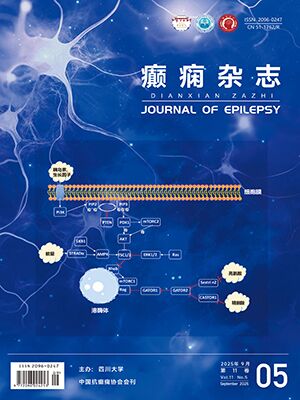| 1. |
Kwan P, Arzimanoglou A, Berg AT, et al. Definition of drug resistant epilepsy: consensus proposal by the ad hoc Task Force of the ILAE Commission on Therapeutic Strategies. Epilepsia, 2010, 51(6): 1069-1077.
|
| 2. |
Fergus Rugg-Gunn. Adverse effects and safety profile of perampanel: a review of pooled data. Epilepsia, 2014, 1: 13-15.
|
| 3. |
JA French, GL Krauss, V Biton, et al. Adjunctive perampanel for refractory partial-onset seizures: randomized phase III study 304. Neurology, 2012, 79(6): 589-596.
|
| 4. |
鄭敏, 白秋江, 趙軍. 抗癲癇新藥吡侖帕奈. 藥物流行病學雜志. 2013, 22(7): 397-398.
|
| 5. |
周永, 劉民, 梁萬年. 癲癇流行病學研究進展. 中華流行病學雜志. 2007, 28(1): 92-94.
|
| 6. |
Fisher RS, Cross JH, French JA, et al. Operational classification of seizure types by the International League Against Epilepsy: Position Paper of the ILAE Commission for Classification and Terminology. Epilepsia, 2017, 58(Suppl. 1): 522-530.
|
| 7. |
趙彩紅, 劉友紅, 丁金金, 等. 吡侖帕奈在4~12歲局灶性癲癇患兒中單藥治療的效果及安全性研究. 癲癇與神經電生理學雜志. 2022, 31(5): 289-293.
|
| 8. |
Krauss GL, Perucca E, Kwan P, et al. Final safety tolerability and seizure outcomes in patients with focal epilepsy treated with adjunctive perampanel for up to 4 years in an open-label extension of phase iii randomized trials: Study 307. Epilepsia, 2018, 59(4): 866-876.
|
| 9. |
Pina-Garza JE, Rosenfeld W, Saeki K, et al. Efficacy and safety of adjunctive perampanel in adolescent patients with epilepsy: post hoc analysis of six randomized studies. Epilepsy Behav, 2020, 104(Pt A): 106876.
|
| 10. |
Rektor I, Krauss GL, Inoue Y, et al. Assessment of the long-term efficacy and safety of adjunctive perampanel in tonic-clonic seizures: Analysis of four open-label extension studies. Epilepsia, 2020, 61(7): 1491-1502.
|
| 11. |
Fogarasi A, Flamini R, Milh M, et al. Open-label study to investigate the safety and efficacy of adjunctive perampanel in pediatric patients (4 to < 12 years) with inadequately controlled focal seizures or generalized tonic-clonic seizures. Epilepsia, 2020, 61(1): 125-137.
|
| 12. |
Chen T, Dai SH, Jiang ZQ, et al. The AMPAR Antagonist perampanel attenuates traumatic brain injury through antioxidative and anti-inflammatory activity. Cell Mol Eurobiol, 2017, 37(1): 43-52.
|




